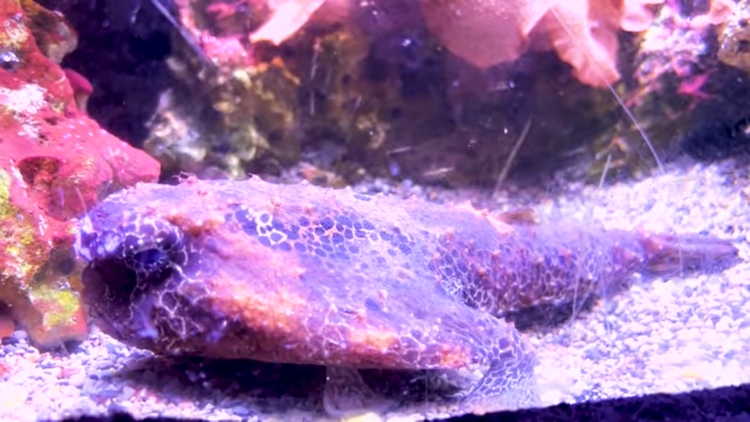All Abour the Walking Batfish
- Dec 17, 2023
- Anshika Mishra
- 131 0 0

In this article, we are learning all about the walking batfish. Here, you'll learn how to take care of all the variations of Batfishes.
Batfishes Overview
Price: $60
Tank Size
Seventy-five gallons and one is built specifically for the batfish, layout-wise. Since this is a bottom dweller, you'll need a thick sandbed and plenty of open sand for this fish to walk around. Don't add it to a reef slam full of rock that leads them to be squished at the front.
Build some lovely rock structures, including arches, overhangs, and caves for the batfish to stay close to or explore.
Batfishes are poor swimmers but have developed solid pectorals and pelvic fins that use almost as-like hands and feet to creep along the sea floor. It's a hilarious thing to see.
When frightened, the batfish will use these fins to bury its body entirely under the snd bed. So, you want a profound one so it can hide whenever they are scared at night.
Care Level: Difficult, with one of the main reasons is getting them to eat for you. In the wild, the walking batfish will remain very still on the sea floor, moving its antenna back and forth for small fishes. Whenever a fish like this is in the tank setting, having a variety of live foods is a good idea.
Shrimps and milder reef fish like chromones and damsels. It can be a very good choice. You'll need something to live in there that will entice them to come out and eat, but at the same time, you'll start to practice target-feeding them food on skewers. Put a piece of shrimp on the end of it, but shred it up a bit. This makes it look like you have a little tail flying around, bouncing around, trying to entice them.
It's almost like when you first try to get a Lionfish to eat. You have to tease them first.
Temperament
It is a very peaceful fish. They post up and hand out in the spot for a while and then hop over to another place and just hang out there. So, they are not highly active. You only have to worry about if it can fit in its mouth. They'll eventually go for it.
So, if you have some more diminutive damsels. Maybe you like tiny Rass or Gobies, they can target them as food.
Reef compatibility
The fish will not mess with any of your corals. It's the worst thing you might see if he bumps into it while walking around. However, they will go after your shrimp and crabs. So, if you have cleaner shrimp, they'll see them as snacks.
Water parameter
Temperature: 72-78 degrees
dKH: 8 to 12
pH: 8.1 to 8.4
Salinity: 1.020 - 1.025
Keep your water in check. Make sure you do your water changes without siphoning the top of this fish.
Lighting
These fishes prefer to be in a darker setting. Reef tanks that like to run a lot of blues and purples are much better for the fish. Now, they'll get used to any lighting in the tank, but the most active fishes live in deeper blue tanks.
Apperances
By the end, they grow up to eight inches with gray bodies with black dots on the faces and the edges, and underneath, the body is a bright red color; some even have bright red lips. The coloration on top helps them quickly blend in the sand.
Diet
They are a carnivore fish. This is a very slow eater; it will not survive with other fast predatory fishes. Be very particular with the tank mates. Choose fishes that do not want to go after the food you try to feed them.






About author